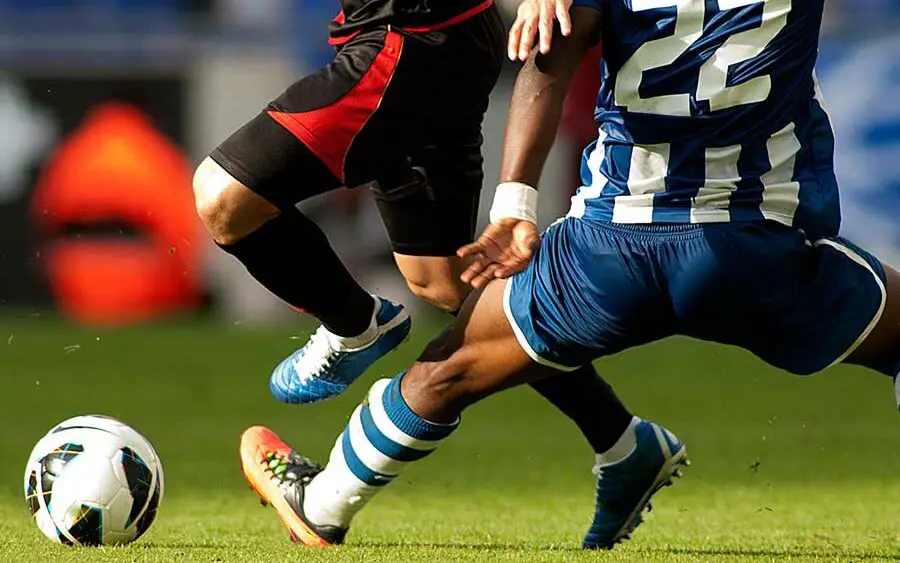Professional foul
Soccer, like many sports, has a number of rules and regulations to ensure fair play and to protect the safety of players. One of the most important rules in soccer is the prohibition on fouls, which are defined as any action that is deemed to be unfair or dangerous.
There are many different types of fouls that can occur during a soccer match, but one of the most controversial is the professional foul, or sometimes referred to as a ‘tactical foul’.

What is a Professional Foul in Soccer?
A professional foul is a cynical offense in which a player deliberately tackles or stops an opponent who is advancing on goal. This type of foul is often committed by defenders who are trying to prevent the opposition from scoring.
By committing a professional foul, the defending team can gain an advantage by breaking up a dangerous attack, therefore, being able to organize the defense before the free kick is taken. The attacking team could also be awarded a penalty kick if the foul has occurred inside the penalty area.
Professional fouls are often seen as a tactical move, and as such, they are not considered to be as reckless or dangerous as other types of fouls. However, they are still against the rules of the game and can result in a caution or even a red card.
What is the punishment for a professional foul?
A professional foul in soccer almost always results in the offending player receiving a caution. The common punishment is a yellow card and this is given when a player purposely prevents a promising attack from starting or deliberately fouls an opponent during an attack but not near the goal area or preventing a clear goal. These fouls are usually deemed to be reckless and not dangerous.
However, a red card can be awarded for more serious and obvious fouls. If a player fouls an opponent and stops a clear goal-scoring opportunity then a red card is given as an advantage was taken in an unsportsmanlike manner. A common example of this punishment can be known as ‘last man’, this is when the attacking player is through on goal and is fouled by either the last defender or the goalkeeper.
If a player uses excessive force when tackling a player, resulting in injury or a serious injury then a red card can be given for dangerous play. It is important to note that the referee has the discretion to decide whether or not a foul warrants a yellow or red card, based on the severity and intent of the foul.
Examples of Professional Fouls in Soccer
Professional fouls can occur in a variety of situations, but they often involve a defender intentionally breaking up an opposition attack. Some common examples of professional fouls include:
- Tackling an opponent from behind in order to prevent them from advancing on goal.
- Pulling an opponent’s shirt or shorts in order to slow them down.
- Tripping an opponent in order to stop them from advancing.
- Intentionally handling the ball in order to prevent a goal-scoring opportunity.
- Taking down an opposition player who is through on goal, in order to prevent them from scoring.
- Intentionally fouling an opposition player in order to disrupt the flow of the game.
Examples of players and managers known for using this strategy
- Sergio Ramos: The former Real Madrid defender has been involved in several controversial incidents throughout his career, including a number of professional fouls. Ramos is known for his habit to accumulate a large number of yellow and red cards and is considered a typical ‘bully’.
- Jose Mourinho: The Portuguese strategist has a reputation for employing a defensive style of play and instructing his players to commit tactical fouls in order to disrupt opposition attacks.
- Roy Keane: The former Manchester United midfielder was known for his aggressive playing style and willingness to make tough tackles, which sometimes crossed the line into professional fouls.
- Pepe: Another former Real Madrid defender was often criticized for his physical play and occasional use of professional fouls to break up opposition attacks.
Conclusion
Professional fouls can be frustrating for both players and fans, as they can disrupt the flow of the game and prevent exciting attacking play. However, they are an important part of soccer and help to ensure that the game is played fairly and safely.
By understanding the rules and regulations surrounding professional fouls, players can avoid committing these types of fouls and ensure that they are playing the game in a fair and sportsmanlike manner.
